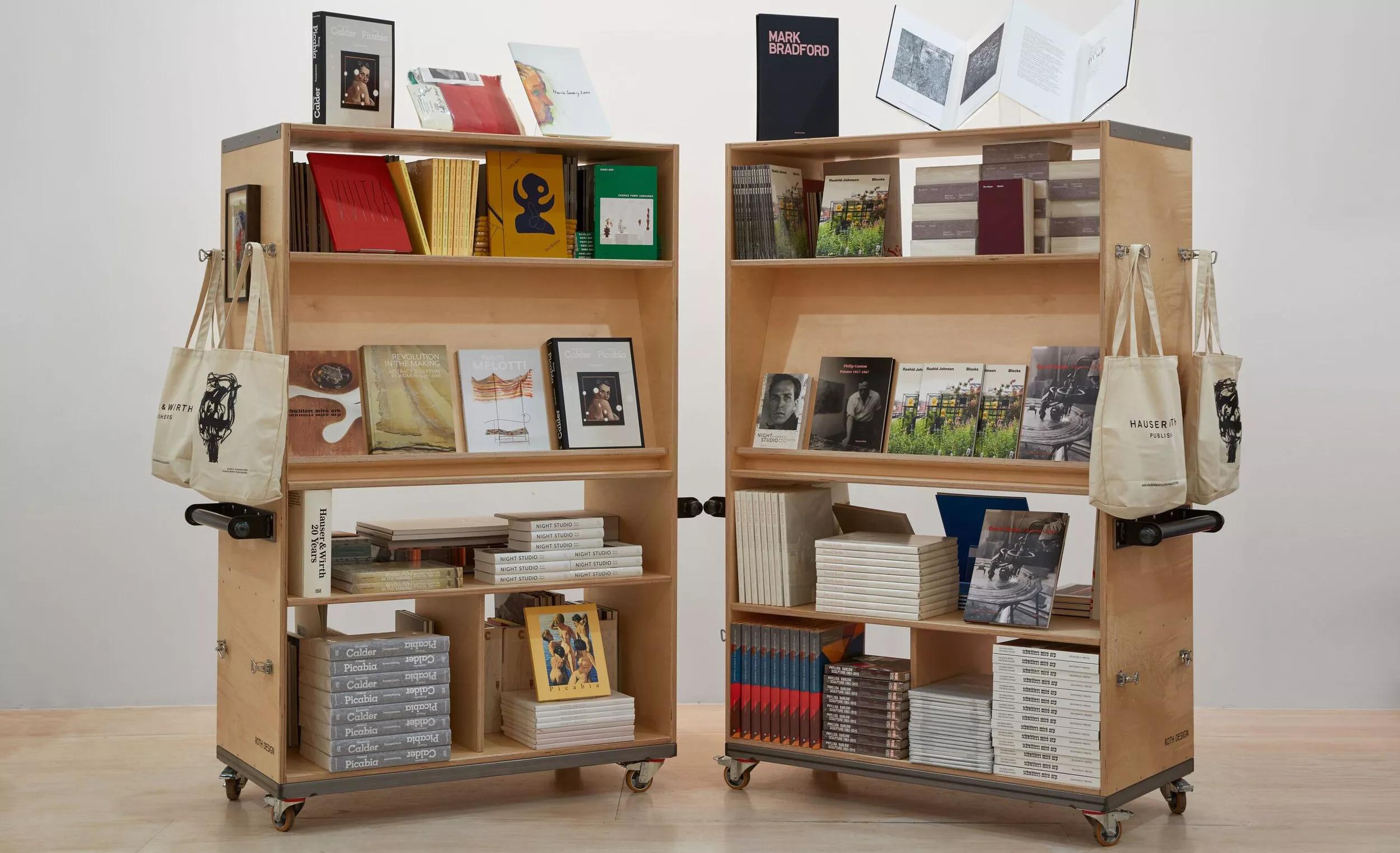
Eva Hesse, No title, 1962 © The Estate of Eva Hesse. Allen Memorial Art Museum, Oberlin College
Eva Hesse’s Complete Body of Works on Paper Published in New Digital Catalogue Raisonné
A new digital catalogue raisonné encompassing over a thousand works on paper created by Hesse between 1952 and 1970, released by Hauser & Wirth Institute and the Estate of Eva Hesse
Founded in 2018, Hauser and Wirth Institute (HWI) is a nonprofit, private foundation dedicated to transforming the field of artists’ archives by nurturing equity and innovation and increasing access to archives. The Institute is pleased to announce a new digital catalogue raisonné, Eva Hesse Drawings, developed under the direction of scholar Dr. Renate Petzinger and Barry Rosen of the Eva Hesse Estate, who previously collaborated on the two-volume catalogue raisonné of Eva Hesse’s paintings and sculpture. Originally planned as a print publication, Hauser & Wirth Institute provided the support to produce this first-ever compilation of Hesse’s entire body of works on paper as a free, online resource.
‘Drawing is the continuous thread as Hesse turned from the painter she began as to the sculptor she became…there is certainly a ferocious sense of herself—and her hand—on a sheet of paper, however diverse her practice would become.’—Briony Fer, 2019

Eva Hesse, No title, 1964 © The Estate of Eva Hesse

Eva Hesse in her Bowery Studio, 1966
Known for her pioneering work in sculpture and innovative use of latex, fiberglass, and plastics, Hesse’s works on paper reveal an understudied aspect of her practice. The catalogue raisonné charts the origins of her enduring engagement with the medium as a primary site for her experimentations with new ideas and processes, and illuminates the vital role that drawing played throughout her career. ‘What is important about this catalogue raisonné is that it reveals Eva Hesse in her totality: a constantly-evolving artist, persistent and enduring in her vision,’ explained co-editor Barry Rosen.
Eva Hesse Drawings encompasses approximately 1,120 works on paper created by Eva Hesse between 1952 and her death in 1970 at 34 years old. The publication includes drawings, collages, photograms, etchings, lithographs, pages from diaries and notebooks, and sketches for sculptures—with around 350 works from her teenage years.

Eva Hesse, No title, 1965 © The Estate of Eva Hesse. Museum Wiesbaden, Wiesbaden, Germany

Eva Hesse, No title, 1964 © The Estate of Eva Hesse. Weatherspoon Art Museum, University of North Carolina at Greensboro
‘We are thrilled to provide this free resource as part of our mission to radically increase access to the art-historical record,’ said Lisa Darms, executive director of Hauser & Wirth Institute. ‘This online catalogue raisonné provides entry into the lesser-known aspects of Hesse’s practice and showcases the stunning breadth of the artist’s experimentation during her short lifetime.’
‘It is a curious characteristic of many of Hesse’s works that once you have been touched by them you are caught between emotions. That they can be simultaneously experienced as humorous, impressive, whimsical, pathetic, calm, frantic, grand, or sad is a measure in some contradictory manner of the seriousness that lies at the core of her art.’—Lucy Lippard, 1976

Eva Hesse, No title, 1958 © The Estate of Eva Hesse

Eva Hesse, No title, 1961 © The Estate of Eva Hesse
Eva Hesse was born in 1936 in Hamburg, Germany. Her family fled Nazi Germany, eventually emigrating to New York City in 1939. Hesse graduated from Yale in 1959, after studying under abstract painter Josef Albers. She returned to New York, involving herself in a circle of other minimalist artists, such as Sol Le Witt, Donald Judd, Robert Morris, Bruce Nauman, Richard Serra, and Robert Smithson. They worked with materials that were new for the time—latex, fiberglass, plastic, polythene—elements which yielded works alive with mutability, instability.
Along with this group of artists, Eva Hesse ushered in the postminimal movement and emerged as an icon of American art in the 1960s. Her death in 1970, at the age of 34, cut short a career that became a major influence on subsequent generations of artists, despite spanning only a decade. Recent comprehensive solo exhibitions, at the Solomon R. Guggenheim Museum, as well as a retrospective that toured from the San Francisco MoMA to Museum Wiesbaden and the Tate Modern in London, highlight the lasting interest in her oeuvre.

Eva Hesse, No title, 1969 © The Estate of Eva Hesse

Eva Hesse, No title, 1969 © The Estate of Eva Hesse
–
About Dr. Renate Petzinger Dr. Petzinger is an author and freelance researcher who formerly held the position of Deputy Director and Curator at Museum Wiesbaden. She has contributed to catalogues raisonnés of Jochen Gerz, Ilya Kabakov, Ingeborg Lüscher and Robert Mangold.
About Barry Rosen Barry Rosen is a curatorial consultant and advisor to Ida Applebroog and the estates of Eva Hesse, Allan Kaprow, Lee Lozano, and Dieter Roth. He was on the founding staff of the New Museum, and has contributed to several significant exhibitions, including ‘Eva Hesse: A Retrospective,’ curated by Helen A. Cooper at the Yale University Art Gallery, and ‘Eva Hesse,’ organized by Dr. Petzinger and Elisabeth Sussman and on view at SFMOMA, Museum Wiesbaden, and Tate Modern. He is also editor of Eva Hesse Diaries.
About Hauser & Wirth Institute Hauser & Wirth Institute is a non-profit, private foundation dedicated to transforming the field of artists’ archives by nurturing equity and innovation and increasing access to archives. Operating independently of commercial interests, the Institute provides grants for progressive archival projects and education, fosters networks locally and internationally and organizes public programming that enlivens and expands conversations around artistic legacies.
Related Stories
1 / 3




